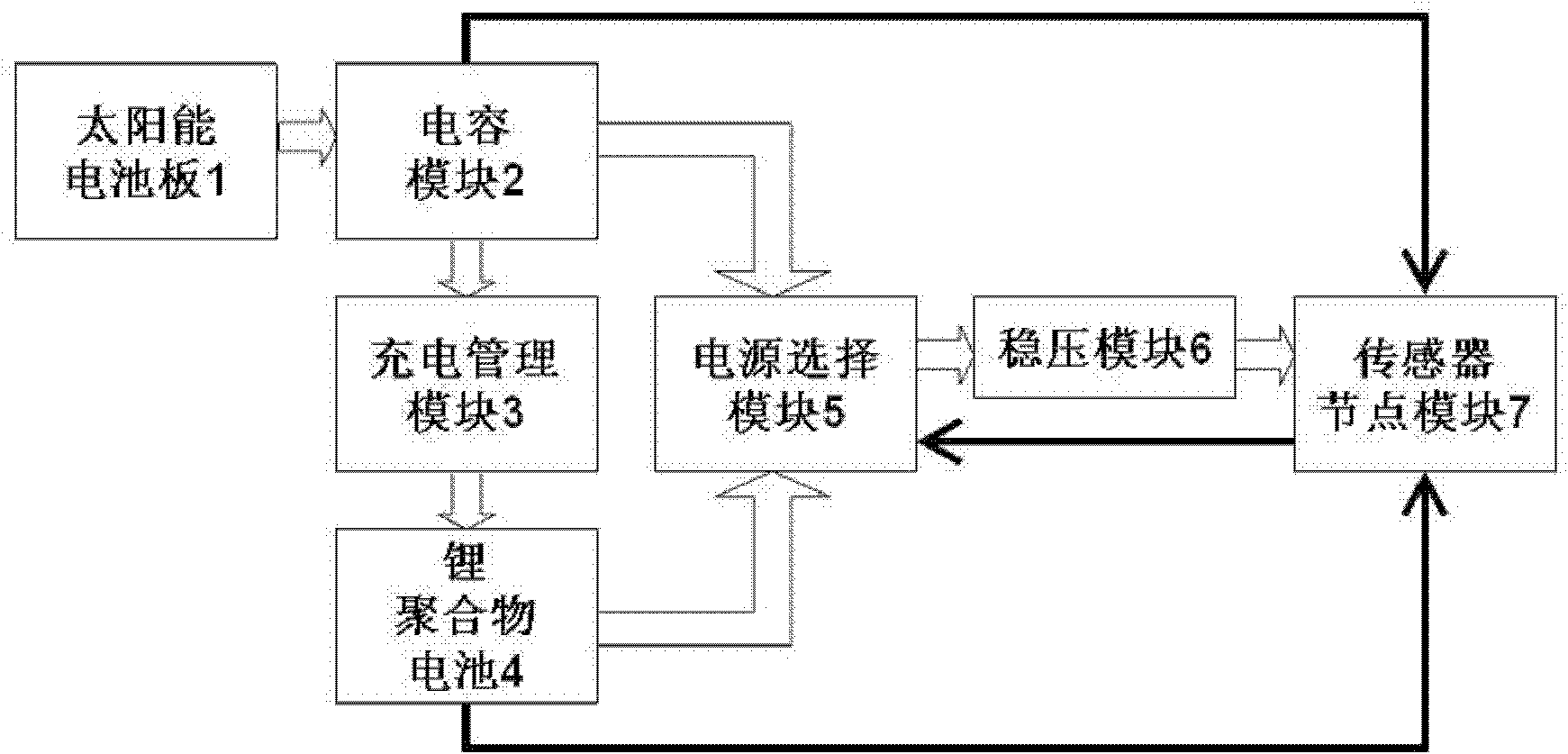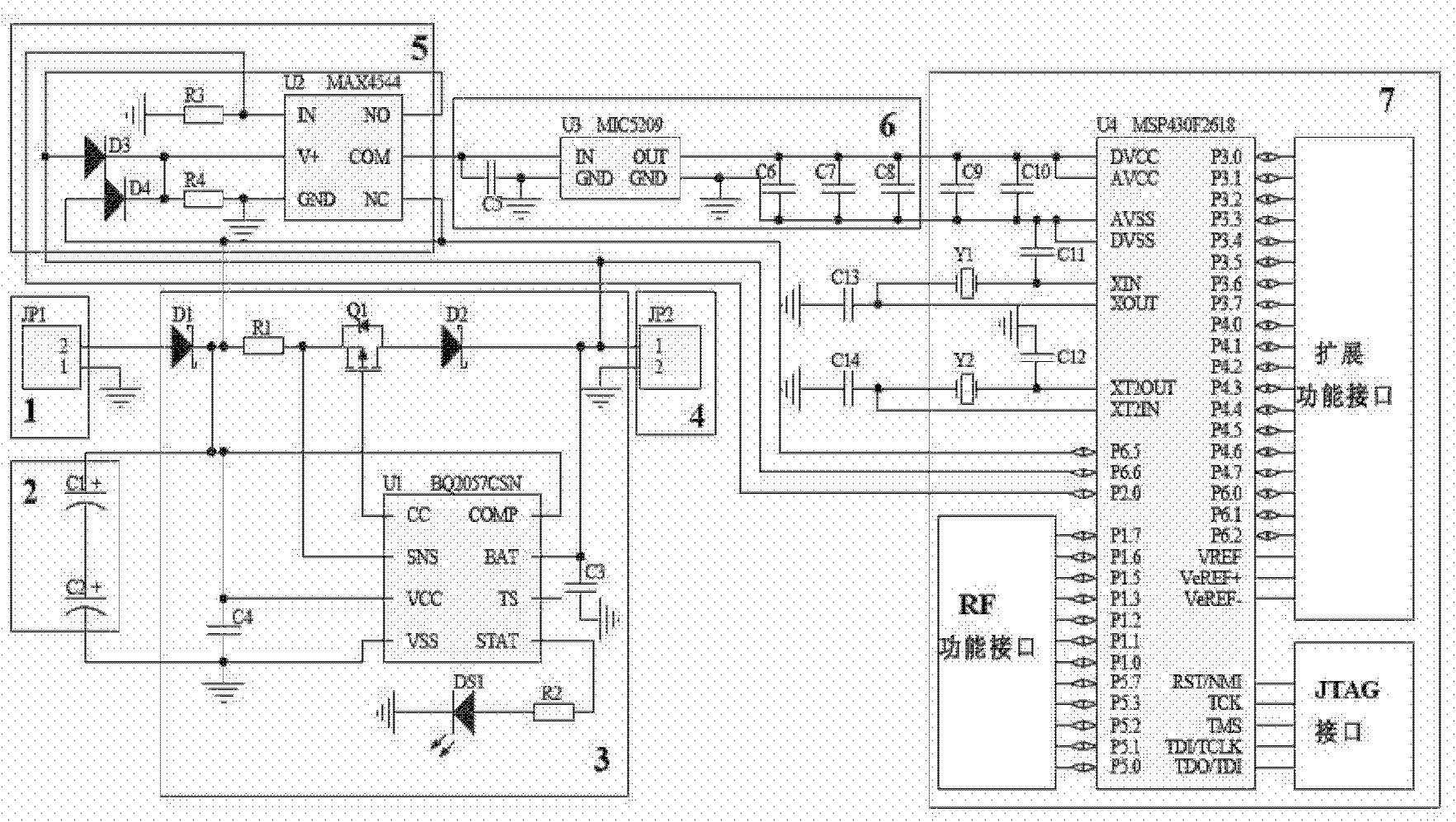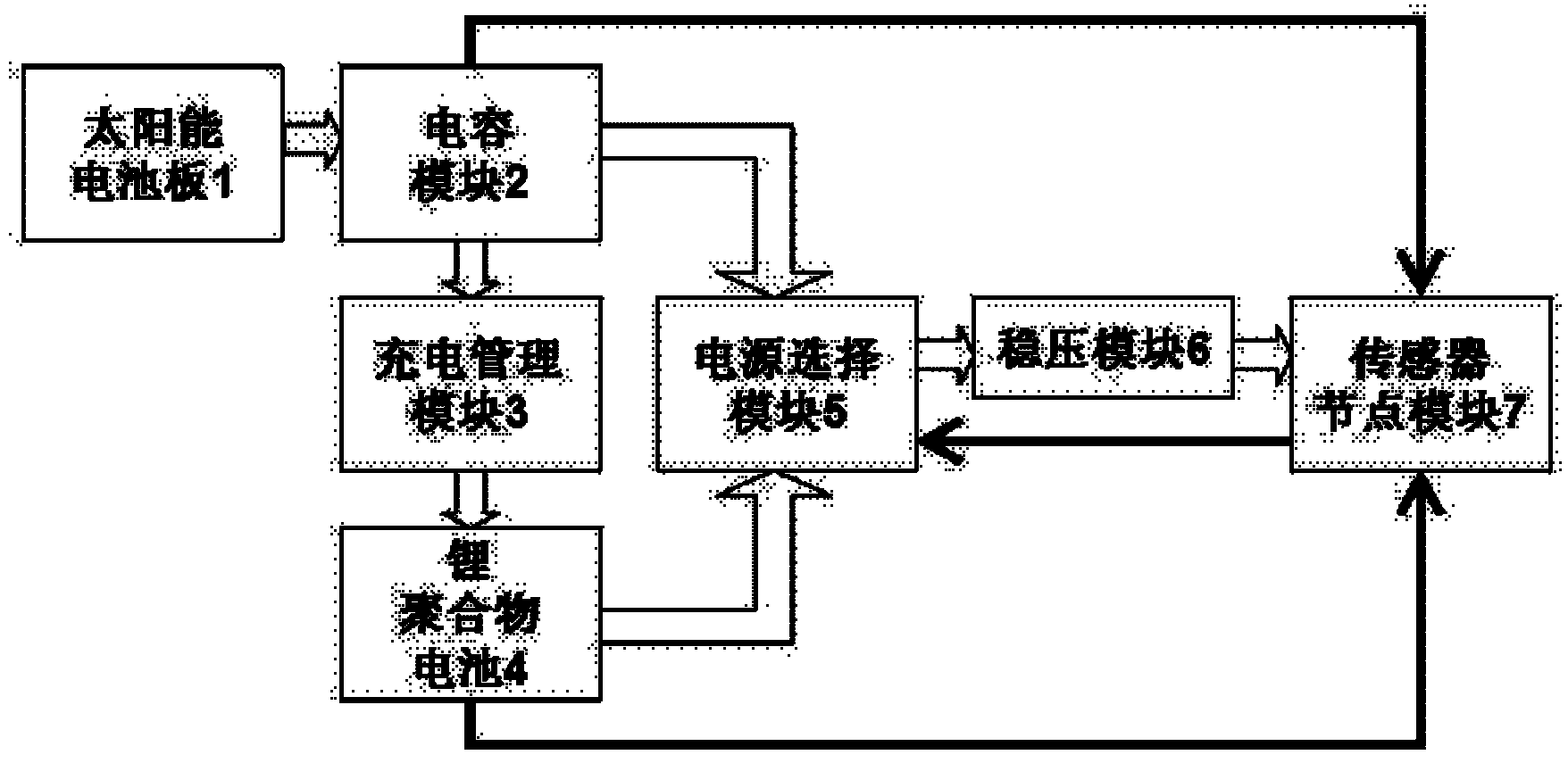Photovoltaic energy autonomy system and method of wireless sensor network node
A sensor node, wireless sensor technology, applied in network topology, wireless communication, energy-saving ICT, etc., can solve problems such as insufficient energy management and efficiency utilization, unproven practicability, and inclusion of energy state monitoring, so as to facilitate energy management. , Reduce the number of charge and discharge, and the overall structure is reasonable.
- Summary
- Abstract
- Description
- Claims
- Application Information
AI Technical Summary
Problems solved by technology
Method used
Image
Examples
Embodiment
[0023] Such as figure 1 As shown, the wireless sensor network node photovoltaic energy autonomous system involved in this embodiment includes: solar panel 1, capacitor module 2, charging management module 3, lithium polymer battery 4, power supply selection module 5, voltage stabilization module 6 and sensor nodes Module 7, wherein: the solar panel 1 is connected to the capacitor module 2 to transmit energy information, the capacitor module 2 is connected to the charging management module 3 to transmit energy information, the capacitor module 2 is connected to the power supply selection module 5 to transmit energy information, the charging management module 3 is connected to the lithium battery The polymer battery 4 is connected to transmit energy information, the lithium polymer battery 4 is connected to the power selection module 5 to transmit energy information, the power selection module 5 is connected to the voltage stabilizing module 6 to transmit energy information, and ...
PUM
 Login to View More
Login to View More Abstract
Description
Claims
Application Information
 Login to View More
Login to View More - R&D
- Intellectual Property
- Life Sciences
- Materials
- Tech Scout
- Unparalleled Data Quality
- Higher Quality Content
- 60% Fewer Hallucinations
Browse by: Latest US Patents, China's latest patents, Technical Efficacy Thesaurus, Application Domain, Technology Topic, Popular Technical Reports.
© 2025 PatSnap. All rights reserved.Legal|Privacy policy|Modern Slavery Act Transparency Statement|Sitemap|About US| Contact US: help@patsnap.com



